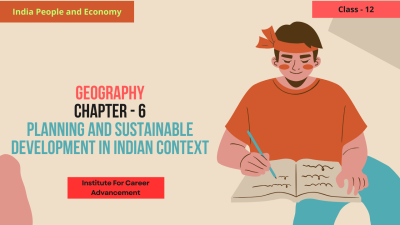Planning and Sustainable Development in Indian context - Class 12
Planning and Sustainable Development in the Indian Context is a Class 12 course that explores the concepts of sustainable development and its relevance to India. It delves into the planning process in India, its evolution over time, and its effectiveness in achieving sustainable development goals. The course also examines the challenges and opportunities facing India in its pursuit of sustainability, promoting critical thinking and problem-solving skills related to planning and development. ভারতীয় প্রেক্ষাপটে পরিকল্পনা ও টেকসই উন্নয়ন হল দ্বাদশ শ্রেণির একটি কোর্স যা টেকসই উন্নয়নের ধারণা এবং ভারতের সাথে এর প্রাসঙ্গিকতা অন্বেষণ করে। এটি ভারতে পরিকল্পনা প্রক্রিয়া, সময়ের সাথে এর বিবর্তন এবং টেকসই উন্নয়ন লক্ষ্য অর্জনে এর কার্যকারিতা নিয়ে গভীরভাবে আলোচনা করে। কোর্সটি টেকসইতা, সমালোচনামূলক চিন্তাভাবনা এবং পরিকল্পনা ও উন্নয়নের সাথে সম্পর্কিত সমস্যা সমাধানের দক্ষতার প্রচারে ভারতের মুখোমুখি চ্যালেঞ্জ এবং সুযোগগুলিও পরীক্ষা করে।
English
Last updated
Wed, 27-Nov-2024



















